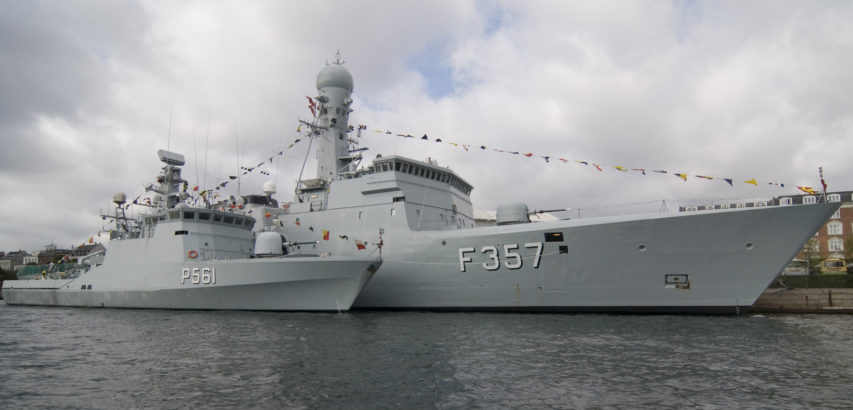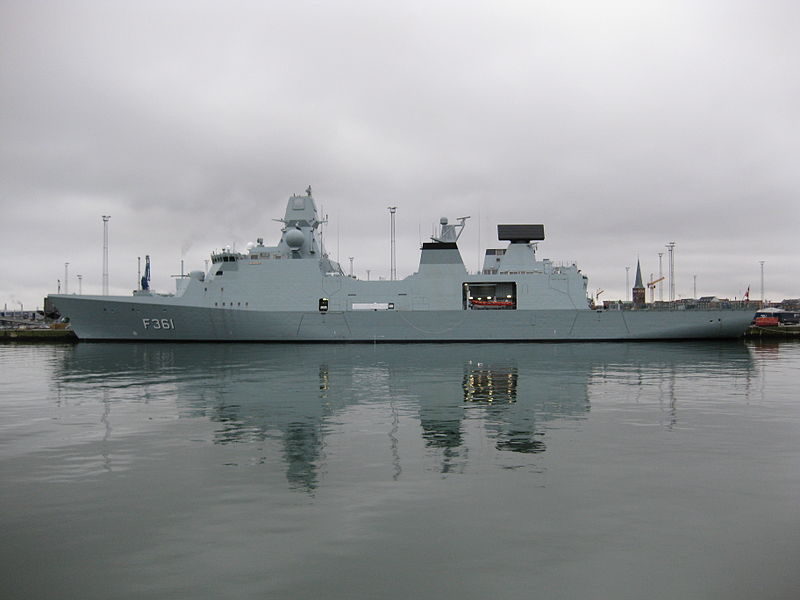Published on 21 May 2016
Macklemore’s uncle sits in the chair of wisdom again to answer your questions about World War 1. This time we talk about anti war movements, the point of no return and how our team copes with the horrors of war.
May 22, 2016
Point Of No Return – Anti-War-Movements I OUT OF THE TRENCHES
Perhaps the US Navy can learn from Denmark on getting the “Little Crappy Ships” right
On the National Interest Blog, James Hasik points out that the idea of the Littoral Combat Ships of the US Navy was successfully implemented more than twenty years ago (and much more economically, too):
In contrast, we know it’s possible to get modularity right, because the Royal Danish Navy has been getting it right since the early 1990s. Way back in 1985, Danyard laid down the Flyvefisken (Flying Fish), the first of a class of 14 patrol vessels. The ships were intended to fight the Warsaw Pact on the Baltic — a sea littoral throughout, with an average depth of 180 feet, and a width nowhere greater than 120 miles. Any navy on its waters might find itself fighting surface ships, diesel submarines, rapidly ingressing aircraft, and sea mines in close order. On the budget of a country of fewer than six million people, the Danes figured that they should maximize the utility of any given ship. That meant standardizing a system of modules for flexible mission assignment. The result was the Stanflex modular payload system.
At 450 tons full load, a Flyvefisken is much smaller than a Freedom (3900 tons) or an Independence (3100 tons). Her complement is much smaller too: 19 to 29, depending on the role. At not more than 15 tons, the Stanflex modules are also smaller than the particular system designed anew for the LCSs. But a Flyvefisken came with four such slots (one forward, three aft), and a range of modules surprisingly broad […]
Swapping modules pier-side requires a few hours and a 15-ton crane. Truing the gun module takes some hours longer. Retraining the crew is another matter, but modular specialists can be swapped too. The concept has had some staying power. The Flyvefiskens served Denmark as recently as 2010. In a commercial vote of confidence, the Lithuanian Navy bought three secondhand, and the Portuguese Navy four (as well as a fifth for spare parts). Over time, the Royal Danish Navy has provided Stanflex slots and modules to all its subsequent ships: the former Niels Juel-class corvettes, the Thetis-class frigates, the Knud Rasmussen-class patrol ships, the well-regarded Absalon-class command-and-support ships, and the new Ivar Huitfeldt-class frigates.
Flyvefisken-class patrol ship HDMS Skaden (hull number P561) and HDMS Thetis (F357) in Copenhagen (via WikiMedia)
In short, 25 years ago the Danes figured out how a single ship could hunt and kill mines, submarines and surface ships. A small ship can’t do all those things well at once, but that’s a choice in fleet architecture. Whatever we think of the LCS program, we shouldn’t draw the wrong lessons from it. Why is this important? Modularity is economical, as the Danes have long known. Critically, modularity also lends flexibility in recovering from wartime surprise, in that platforms can be readily provided new payloads without starting from scratch. Because on December the 8th, when you need a face-punched plan, you’d rather be building new boxes than new whole new ships.
Wikipedia has this image of the HDMS Iver Huitfeldt:
QotD: Western suicidalism
The most important weapons of al-Qaeda and the rest of the Islamist terror network are the suicide bomber and the suicide thinker. The suicide bomber is typically a Muslim fanatic whose mission it is to spread terror; the suicide thinker is typically a Western academic or journalist or politician whose mission it is to destroy the West’s will to resist not just terrorism but any ideological challenge at all.
But al-Qaeda didn’t create the ugly streak of nihilism and self-loathing that afflicts too many Western intellectuals. Nor, I believe, is it a natural development. It was brought to us by Department V of the KGB, which was charged during the Cold War with conducting memetic warfare that would destroy the will of the West’s intelligentsia to resist a Communist takeover. This they did with such magnificent effect that the infection outlasted the Soviet Union itself and remains a pervasive disease of contemporary Western intellectual life.
Consider the following propositions:
- There is no truth, only competing agendas.
- All Western (and especially American) claims to moral superiority over Communism/Fascism/Islam are vitiated by the West’s history of racism and colonialism.
- There are no objective standards by which we may judge one culture to be better than another. Anyone who claims that there are such standards is an evil oppressor.
- The prosperity of the West is built on ruthless exploitation of the Third World; therefore Westerners actually deserve to be impoverished and miserable.
- Crime is the fault of society, not the individual criminal. Poor criminals are entitled to what they take. Submitting to criminal predation is more virtuous than resisting it.
- The poor are victims. Criminals are victims. And only victims are virtuous. Therefore only the poor and criminals are virtuous. (Rich people can borrow some virtue by identifying with poor people and criminals.)
- For a virtuous person, violence and war are never justified. It is always better to be a victim than to fight, or even to defend oneself. But “oppressed” people are allowed to use violence anyway; they are merely reflecting the evil of their oppressors.
- When confronted with terror, the only moral course for a Westerner is to apologize for past sins, understand the terrorist’s point of view, and make concessions.
These ideas travel under many labels: postmodernism, nihilism, multiculturalism, Third-World-ism, pacifism, “political correctness” to name just a few. It is time to recognize them for what they are, and call them by their right name: suicidalism.
Trace any of these back far enough (e.g. to the period between 1930 and 1950 when Department V was at its most effective) and you’ll find a Stalinist at the bottom. Among the more notorious examples are: Paul de Man — racist and Nazi propagandist turned Stalinist, and founder of postmodernism; Jean-Paul Sarte, who described the effects of Stalinism as “humane terror” and helped invent existentialism; and Paul Baran, who developed the thesis that capitalism depended on the immiseration of the Third World after Marx’s immiseration of the proletariat failed to materialize.
Al-Qaeda didn’t launch any of these memes into the noosphere, but it relies on them for political cover. They have another effect as well: when Islamists characterize the West as “decadent”, and aver that it is waiting to collapse in on itself at the touch of jihad, they are describing quite correctly and accurately the effects of Western suicidalism.
Stalinist agitprop created Western suicidalism by successfully building on the Christian idea that self-sacrifice (and even self-loathing) are the primary indicators of virtue. In this way of thinking, when we surrender our well-being to others we store up grace in Heaven that is far more important than the momentary discomfort of submitting to criminals, predatory governments, and terrorists.
Eric S. Raymond, “Suicidalism”, Armed and Dangerous, 2005-09-13.





